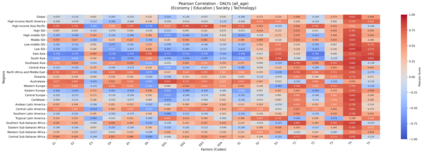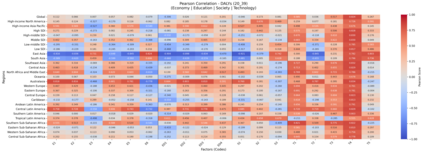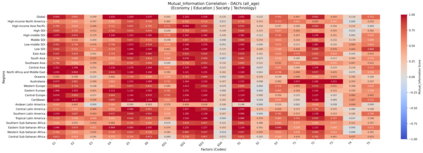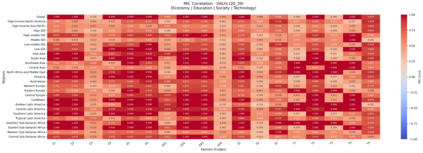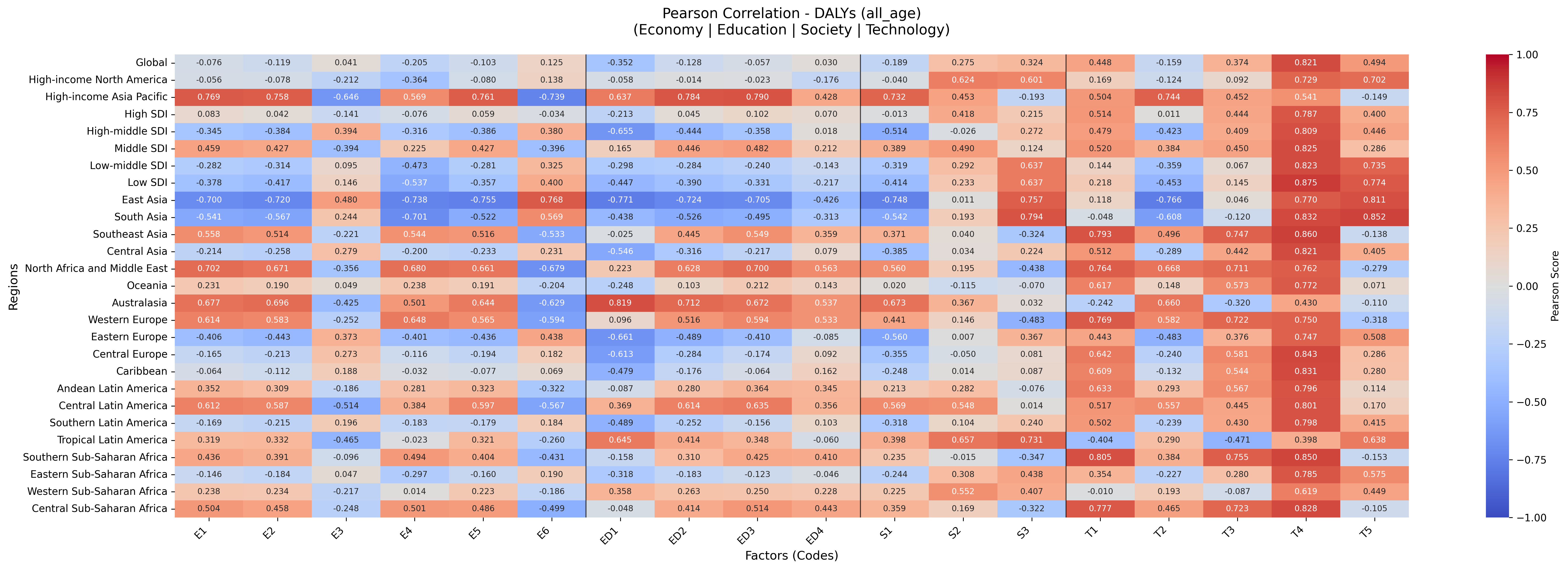This paper quantifies the age-stratified global burden of four mental disorders in 27 regions from 1990 to 2021 using GBD 2021. To put it in detail, it links the age-standardized years of disability adjustment with 18 world development indicators across economic, educational, social and information technology sectors. Then, by means of Pearson correlation, mutual information, Granger causality and maximum information coefficient and other methods, the linear, nonlinear and lagged dependency relationships were evaluated. After research, it was found that there is a very prominent spatio-temporal heterogeneity among young people aged 20 to 39, and the coupling relationship is stronger. From the overall situation, education corresponds to a low burden. Unemployment corresponds to a high burden. Through lag analysis, it can be known that the influence time of economic and technological factors is relatively short, while that of educational factors is relatively long. These results highlight the macro determinants that play a role at different time scales and also provide population-level references for verifying computational mental health models and for intervention measures in specific regions and for specific ages.
翻译:暂无翻译

